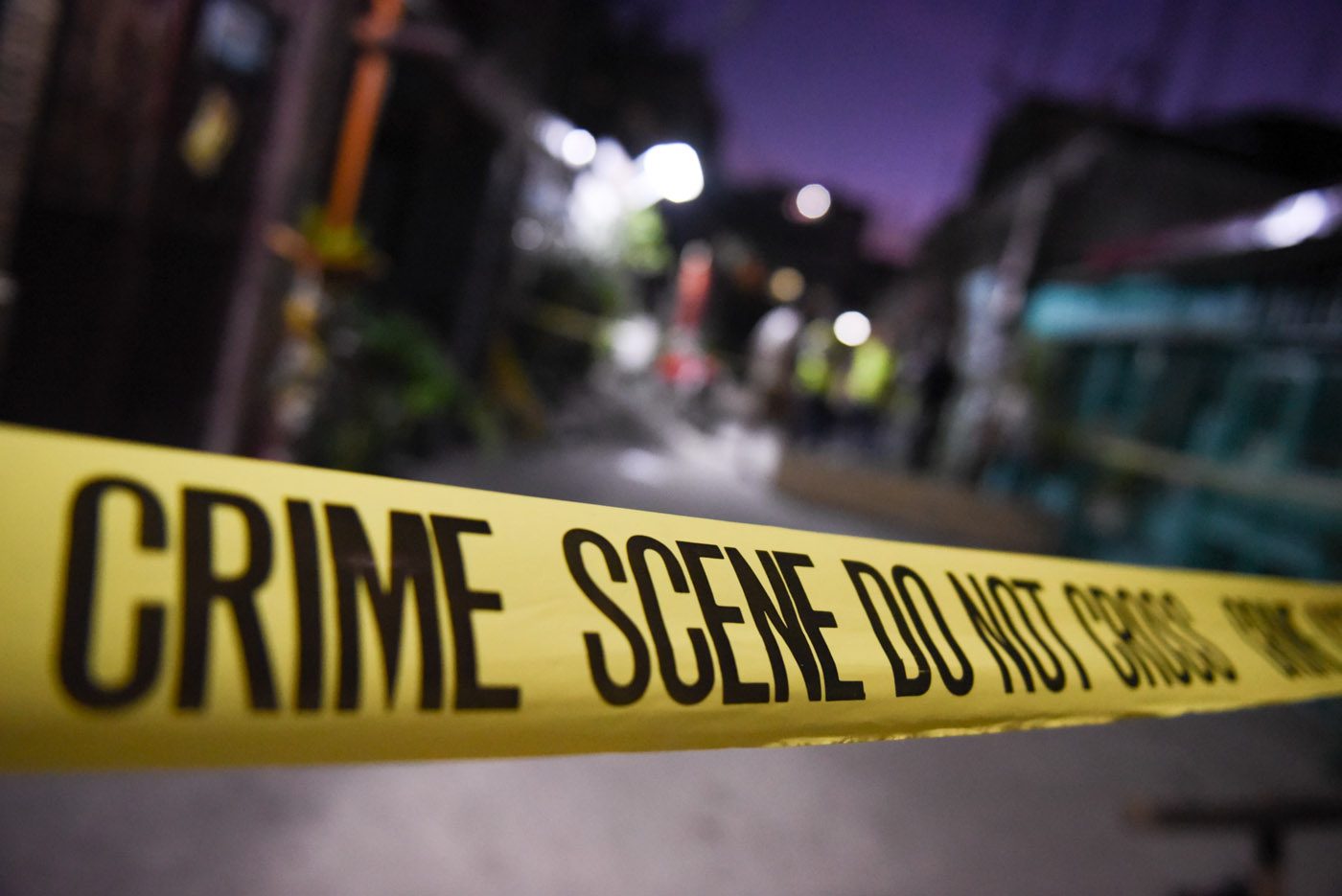SUMMARY
This is AI generated summarization, which may have errors. For context, always refer to the full article.

MANILA, Philippines – Around 1.4 million families fell victim to common crimes in the third quarter of 2018, according to a Social Weather Stations (SWS) survey released on Thursday, November 29.
The SWS survey held from September 15 to 23 showed that 6.1% of Filipino families (around 1.4 million families) reported victimization by any of the common crimes within the past 6 months.
This is higher than in June 2018, when 5.3% or around 1.2 million families got victimized. But this rate is the same as the 6.1% recorded in September 2017.
Common crimes refer to pickpocket or robbery of personal property, break-ins, carnapping, and physical violence.
The recent survey also found that 5.6% of Filipino families (around 1.3 million families) fell victim to property crimes – higher than the 5.1% in June 2018, but still below the 6.1% reported in March 2018.
Meanwhile, 0.7% or around 159,000 families reported that their members got hurt by physical violence, up from the record-low 0.2% in June.
Fear of criminality, presence of drug addicts ‘hardly changed’
In addition, the survey said that families’ fear of burglary and unsafe streets, and the presence of drug addicts hardly changed from the last quarter.
About 52% of Filipino adults said they agreed with the statement, “In this neighborhood, people are usually afraid that robbers might break into their houses.”
This is a 3-point decrease from the 55% recorded in June 2018, and the lowest since December 2011, when it was at 49%.
Meanwhile, 46% agreed that people are usually afraid to walk in the street at night in their neighborhood because it is unsafe. This is the same rate as in March and June 2018.
The survey also showed that 41% agreed there are already very many people addicted to banned drugs in their neighborhood – the same rate logged nationwide in June 2018.
‘Significant strides’
In a statement on Saturday, December 1, Presidential Spokesperson Salvador Panelo took note of the survey results and said that the Duterte administration has made “significant strides” through its war against criminality, including the campaign against illegal drugs.
“Indeed, Filipinos now feel safer knowing fully well the government’s stance against criminals and drug pushers,” Panelo said.
He slammed those who criticize the government, saying, “It also becomes clear that those who remain to dissent the President’s policies are either people who are connected with illegal activities or politicians belonging to the opposition, as well as their blind followers, who cannot accept the feats of the government.”
Panelo then said the government’s achievement “will not render us complacent.” Duterte’s campaign against criminality and illegal narcotics, he said, “shall be pursued until the last day of his term to ensure that our streets are completely safe from criminals, drug personalities and other rogue elements.”
Other findings
The third quarter survey also reported the following:
- Pickpocketing or street robbery: Nationwide, the rate of victimization was 4.6%, up by 0.6 point from June. It rose in all areas except in Balance Luzon. In Mindanao, it increased by 1.6 points to 6.3% in September, the highest since 6.7% in June 2016, said SWS.
- Break-ins: It was only up by 0.2 point in September nationwide, at 2.0%. It was up in Mindanao by 1.6 points in September (at 3.3%), down in Metro Manila by 1 percentage point (at 1.7%), down in Visayas by 0.4 point (at 2.3%), and steady in Balance Luzon (at 1.3%).
- Carnapping: Nationwide, the rate for vehicle-owning families hardly moved, from 0.5% in June to 0.6% in September. However, it was up in Mindanao by 1.4 points at 2.2% (from 0.8% in June) and in the Visayas at 0.9%, from zero case in June. Meanwhile, there were reportedly zero case in Metro Manila and Balance Luzon.
- Physical violence: Cases rose in almost all areas, notably in the Visayas, where it rose from zero case in June to 1.7% in September. However, it was steady in Balance Luzon, at 0.3% for 4 consecutive quarters.
- Families who feared burglaries: It went down in all areas, except in Mindanao. The rate was still highest in Metro Manila (66% in September, down from 69% in June). It was 53% in Balance Luzon (down from 58% in June), 49% in Visayas (down from 53% in June), and 44% in Mindanao (up from 42% in June).
- Families who feared unsafe streets: This sentiment rose in Metro Manila (59% in September, from 53% in June) and Mindanao (42%, from 36% in June), but fell in Visayas (46%, from 48% in June) and Balance Luzon (45%, from 48% in June).
- Presence of drug addicts: This sentiment rose in Metro Manila (63% in September, from 54% in June) and Visayas (42%, from 37% in June), but decreased in Mindanao (30%, from 38% in June). It was only down by 1 point in Balance Luzon (39% in September, from 40% in June).
The Third Quarter 2018 Social Weather Survey involved face-to-face interviews of 1,500 adults, 600 of which were from Balance of Luzon and 300 each in Metro Manila, Visayas, and Mindanao. It has an error margin of ±3% for national percentages, ±4% for Balance Luzon, and ±6% elsewhere.
“Victimization by common crimes reported in SWS surveys is much higher than the number of crimes actually reported to the police,” SWS noted.
SWS said it employs its own staff for questionnaire design, sampling, fieldwork, data-processing, and analysis, and does not outsource any of its survey operations. – Rappler.com
Add a comment
How does this make you feel?
There are no comments yet. Add your comment to start the conversation.